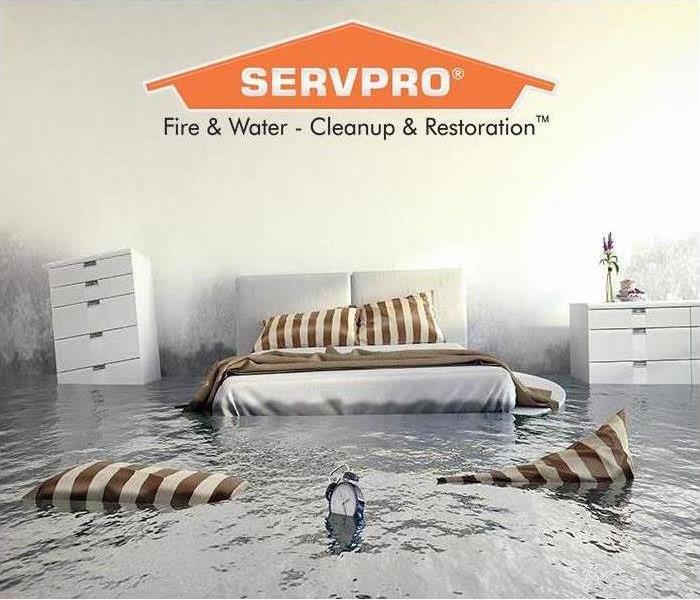Congratulations, you have coverage.
4/11/2019 (Permalink)
Let’s get drying. A quality restoration company will moisture map your home to determine what is wet and what is savable. This helps in developing a drying plan to start getting you back to preloss condition “Like it never even happened." Pictures will be taken (with your permission) to document the damage for the insurance company. Over the past 17 years SERVPRO of Manistee, Ludington, and Cadillac has developed relationships with nearly all insurance companies and their adjusters in western Michigan. They know and trust us and we know them and what they need.
We have national contracts with many of the insurance companies and know exactly what they require to quickly settle a loss. We use their estimating software and price lists so there is never a problem with the price we invoice to the insurance company. Because some insurance companies have specific forms, we have I-pads with the forms pre-loaded if we meet you on site. In west Michigan losses often occur in seasonal homes (or you may be a snowbird soaking up the sun down south). We can mail, fax, or email the forms for you or your representative to sign and return.
Determining the “type” of water damage is critical to before any work is started. The Institute of Inspection Cleaning and Restoration (IICRC) has written a standard of care (S-500) which is recognized nationally as the drying standard. You should ask your restoration company if they are IICRC certified and follow the S-500. The S-500 lists 3 types of water damage, Category 1, 2, and 3 depending on the source of water. Category 1 water originates from a clean water source which is usually a broken pipe, water supply line, toilet bowl breakage, washing machine supply line, sink overflows, etc. This water is not considered to pose a substantial risk to human health. If materials affected by Category 1 water are dryable, they can be saved.
Category 2 water contains significant contamination and has the potential to cause discomfort or sickness if contacted or consumed by humans. This water can come from discharge from dishwasher or washing machine, toilet bowl overflows (without solids), broken aquariums, leaking water beds, fire suppression systems, or ground water coming through walls or floor. Items wet with Category 2 water that cannot be cleaned should be discarded. This would include carpet pad, drywall, and some contents.
Category 3 water is grossly contaminated and contains harmful agents that can cause serious illness if consumed by humans. This water category includes sewage and toilet overflows from beyond the trap (with or without solids). All forms of surface flooding from outside the structure are considered Category 3 due to the possibility of contamination from silt, organic matter, pesticides, heavy metals, regulated materials or toxic organic substances (you never know what your neighbor has stored behind his garage).
Many insurance companies have limits on if and how much Category 3 losses are covered depending on where the loss originated. If it came from a septic or city sewer back up losses may be limited. If it originated from inside the structure from an overflow or broken pipe you should be fine. Once they determine the category of water, the restoration company will know what can be cleaned and dried and what must be discarded. Any item discarded must be documented and photographed. The insurance company is going to want to know what they are paying to replace.
So now that we know what type of water damage it is what happens next?
See our next blog for the answer to that question.






 24/7 Emergency Service
24/7 Emergency Service
